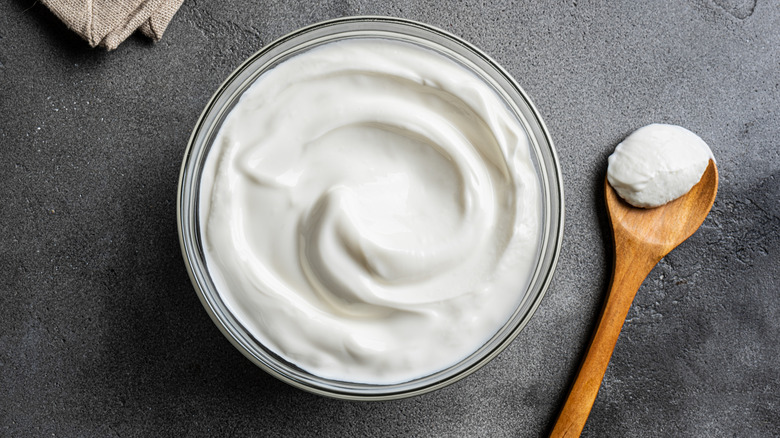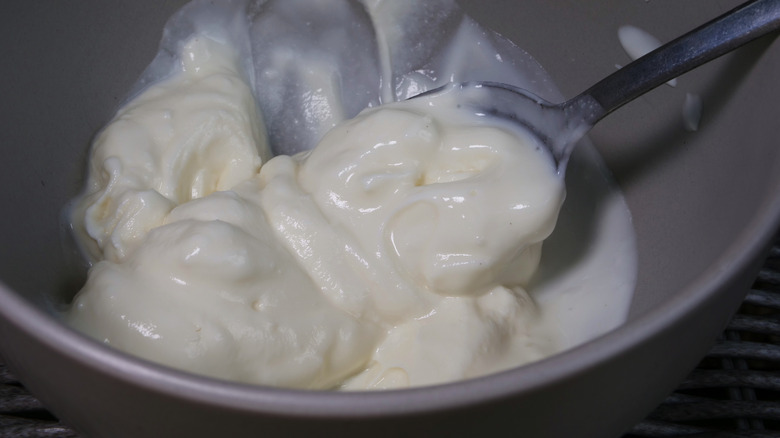Why You Should Avoid Whipping Homemade Yogurt At All Costs
There are plenty of decent plain yogurts we've taste-tested and ranked here at The Takeout, and several perfectly fine grocery store Greek and European yogurts out there. Yet nothing seems to beat homemade yogurt, and not just because it's made with love (or at least made with an appetite). It's easy to make homemade yogurt that beats out store brands, but there is a catch. Perhaps you've heard that stirring yogurt too much isn't good for it. Naturally, it's impossible to avoid stirring the yogurt at all while you're mixing the milk with your yogurt starter, but how much is too much?
To gain some yogurt know-how, we spoke to Adam Gallagher, recipe creator and co-founder of Inspired Taste. Gallagher was happy to explain how yogurt-making can go wrong if you're not careful. "Yogurt is delicate, and over-stirring or whisking it too hard can cause it to break down and become thin or grainy. The proteins and fat in yogurt create its natural creaminess, but vigorous mixing or heat can cause those proteins to tighten and separate, releasing liquid whey," he explained. Instead of whipping it madly and making it runny, he recommends mixing it gently to keep its smooth texture. You especially don't want to disturb it with stirring or excessive movement while it's incubating.
How to work homemade yogurt into recipes
If you're mixing homemade yogurt with other ingredients or adding it to a recipe, not over-whipping it can get tricky. Gallagher suggests whisking yogurt only until it's smooth, and then mixing in other ingredients. How you combine those ingredients can be especially crucial if you're working with different temperatures. The shock of pouring in a hot liquid may cause cold yogurt to seize and curdle. Similarly, incorporating homemade yogurt into a dish that will be served hot, like shawarma sauce or a garlic sauce for meat, requires a little extra care. According to Gallagher, "If you are adding it to something hot, first stir in a little of the warm liquid to slowly bring up the yogurt's temperature." After this, he says you still need to be careful about how hard you stir. "Use gentle folding or light whisking instead of beating to keep the yogurt creamy."
Milk also plays a big role in the strength of your yogurt. If you're terribly worried about your homemade yogurt seizing or splitting, consider using a higher-fat milk, like whole, which is often used in Greek yogurt. Unlike actual yogurt in Greece, which is a bit different because it varies in texture, Greek yogurt sold in the U.S. is thick, creamy, and more forgiving. Gallagher says, "Strained styles like Greek or Icelandic have body and handle heat without breaking." Regardless of what milk you use, let your starter do its thing and avoid over-handling it.

